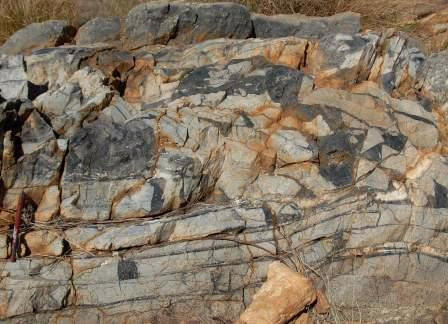Slow Going: Drilling Through Cherts
19.06.2008 For the next few days we will be drilling through a rock type known as chert, this is a very hard rock made of silicon oxide and sometimes also called flint.

Main content
This will be tough going for the drilling equipment as chert is one of the hardest rocks (see Mohs hardness scale) known to geologist. It is however, very exciting for geobiologists because the formation of chert on the ancient seafloor and sometimes near hydrothermal vents can enable the fine-scale preservation of biological material.
Some Archean cherts contain micron sized, fossilized microbial cells and microbial mat remains that have proved cruicial to understanding the origins of life on earth. We hope that we might find lots of organic matter and perhaps even cellular remains in our chert, that will give us more insights to some of the earliest microorganisms on earth.
Photo: (left) aerial view of the Footbridge which gives it's name to one of the important chert horizons in the Barberton Mnt Land, the mountains in the background are made of folded rocks; (right) an outcrop of chert from the Barberton Mnt Land, the light grey chert was laid down on the seafloor and has then been broken up into angular blocks by forceful intrusion of the dark grey-black chert.
